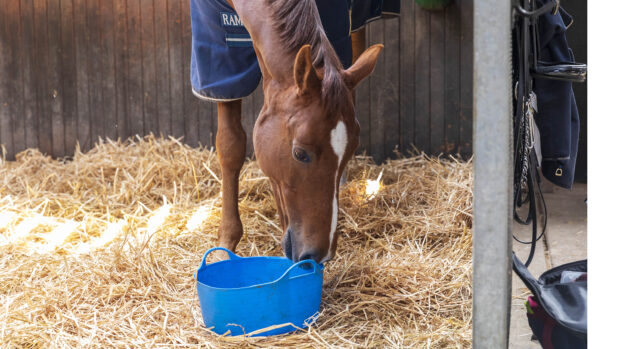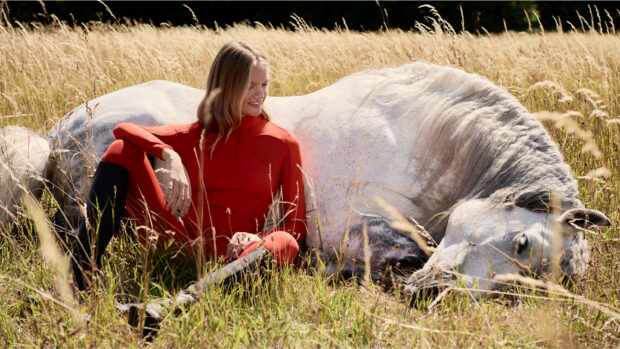Over recent years there has been a huge increase in dogs being stolen, so knowing how to prevent dog theft should be high on every dog owner’s agenda. The main reasons that dogs are stolen are breeding (both male and female) or to get the reward offered by the frantic owner.
All breeds of dog are at risk of theft, but the most commonly stolen breeds include Staffordshire Bull Terriers, chihuahuas and French Bulldogs, but due to the current popularity of poodle-cross breeds, poodles, spaniels, Labradors – or anything that’s a “poo” or a “doodle” – are particularly high risk, too. There have also been instances of litters stolen away from the bitch to then be sold on, which is devastating for both the bitch and the owner, not to mention the damage it does to the litter being removed too young.
Another fraud is dogs that go missing on a walk or from the garden. Sometimes the thieves in question leave your dog tied up outside in all weathers and starve it for about a week, waiting for lost posters to surface with the reward. They then claim to have found the dog a few miles from the last sighting and judging by the state of your dog, you believe this to be true and pay the reward. Although, in all honesty, you would pay it anyway just to have your dog back.
How to prevent dog theft: practical steps
1. Collar and identification tag
The Control of Dogs Order 1992 made it law that all dogs in a public place must have a collar and identification tag. The Kennel Club Good Citizen Scheme states that, to comply with the law, on one side it should have your surname, first line of your address and postcode, or the whole of your address and your phone number on the other side.
Personally, I disagree, which is a conflict for me given my KCAI membership. However, I feel that your address being on there not only leaves your house vulnerable to a break in, as if they have already stolen your dog then they know you’re likely to be out searching for it. Many dog thieves will appear harmless and ask to stroke your dog, while checking out the information on the tag, It’s then easier for them to steal your dog from the house or garden.
I recommend that my clients put their surname (and never the dog’s name) and mobile number on one side, with “chipped and neutered” on the other. The neutered part only really works if it is a female, as it’s clear whether the males have been neutered or not, but it makes your bitch less attractive as they cannot be bred from. Although they may not be spayed, it’s a particularly good deterrent that cannot been disproved quickly.
2. Keep your microchip up to date
Another UK law for dog owners – all dogs and all puppies must be microchipped, which came into force in April 2016. Do not forget to transfer the chip to your ownership or update your details if you change your phone number or move house.
3. Secure your property
Make sure that your property fencing and gates are as secure as possible. This will help stop them getting out and ending up in the wrong hands, but you also need to make it more difficult for the people setting out to attempt a theft. The more enclosed and higher your fencing, the harder it is to climb or reach over and grab.
4. CCTV
I have this everywhere around my property and it is a godsend. During the spring and summer, its nice to be able to leave our doors open for the dog to wander in and out but if you have a camera set up, while you are working from home or busy, then this can give you extra peace of mind.

Reolink Duo 2 | Amazon
We tested this outdoor security camera and rated it H&H Approved – read the full review. It’s available to use with WiFi or PoE.
5. Do not leave them tied up outside shops
This is easy picking and asking for trouble. If I see a dog tied up and left, I will often wait to make sure that it is indeed the owner that comes and unties it. This is obvious in most cases due to the reception from the dog. You wouldn’t leave your baby outside in a pram, so don’t leave your dog.
6. Get a tracker
I use one of the best GPS trackers for dogs all the time as you can see exactly where your dog is at all times. You can also draw boundaries around your property that will set off an alarm if they’re taken out of the safe zone you have set. Obviously, people that steal dogs are not stupid and the usual action is to remove the collar and tags straightaway and dump them. However, if your dog wears a little bandana and hides this, it may give you enough time or at least their last known location on your phone as some indication as to where they were taken.
While an Apple Air Tag is more discreet than a normal tracker, these are not always trackable in unpopulated places or dense woods, so do your homework before buying one.
Tractive GPS Tracker | Amazon
This lightweight (35g), 100% waterproof tracker uses live GPS tracking updating every two to three seconds, with unlimited range worldwide.
Pitpat GPS Tracker | Amazon
This tracker has no subscription fees, but has cutting-edge GPS technology and tracks your dog’s exercise, rest and play.
7. Keep your dog in sight
Do not allow your dog to run off out of sight on walks and ensure you have worked on how to recall your dog. Dogs running around off lead are easy pickings for a dog thief, especially in a well-known dog walking vicinity.
8. Have a nickname for your dog
Mine have several. A thief will never know this, so your dog’s reaction to you and its nickname is a dead giveaway to any police officer or warden present if you believe the person in question has your dog.
9. Get your dog a tattoo
This seems to have become less popular as the years have gone on, but many dogs used to have tattoos inside their ears. This would be harder to hide or remove than a microchip without causing serious harm and disfigurement to the dog.
10. Get photos
Ensure you have recent photos of your dog from all angles – both groomed and not – ready to share if the worst should happen.
What to do if your dog’s been stolen
If you think your dog’s been stolen, it’s important to act quickly and calmly – your main priority is to make your dog too hot to handle.
1. Social media can be an absolute godsend in this regard. Put your dog on all the lost and stolen websites, such as doglost.co.uk, and social media pages that you can. Make a post on Facebook, share it nationally and pay to boost it. This will alert most people if they are offered the dog – and fellow dog lovers will keep an eye out.
2. Contact a dog-searching company with a drone. These are more for the lost dog, but if their tracker is still working, they can get pictures of where the dog may be being kept.
3. Posters, everywhere!
4. Inform all the local vets, dog wardens, rescue centres and boarding kennels – if the dog becomes too hot to hand, they are often dumped.
5. Alert the police.
6. Inform the microchip database in case they try to re-register the dog as their own. If your dog’s details are on Petlog, you can mark them as missing at petlog.co.uk
You might also like:

Best GPS trackers to keep tabs on your pooch

How to master recall

Best cameras to keep an eye on your dog when you’re out

Reliable recall: the best whistles to train your dog

Reolink Duo 2 Outdoor Security Camera *H&H Approved*
£159.99

Subscribe to Horse & Hound magazine today – and enjoy unlimited website access all year round
Horse & Hound magazine, out every Thursday, is packed with all the latest news and reports, as well as interviews, specials, nostalgia, vet and training advice. Find how you can enjoy the magazine delivered to your door every week, plus options to upgrade your subscription to access our online service that brings you breaking news and reports as well as other benefits.




